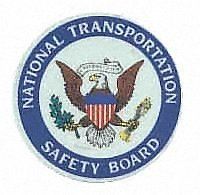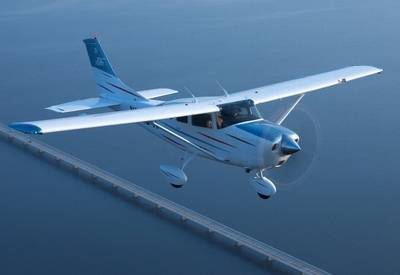Witnesses Describe Accelerated Stall In Turn
 Editor's Note: Below is the unedited
preliminary report issued by the National Transportation Safety
Board on the June 29 takeoff crash of a Cessna U206F in Santa Rosa,
NM.
As ANN reported, all five
passengers onboard the plane perished when the aircraft apparently
stalled in a climbing left turnout...
Editor's Note: Below is the unedited
preliminary report issued by the National Transportation Safety
Board on the June 29 takeoff crash of a Cessna U206F in Santa Rosa,
NM.
As ANN reported, all five
passengers onboard the plane perished when the aircraft apparently
stalled in a climbing left turnout...
NTSB Identification: DFW08FA170
14 CFR Part 91: General Aviation
Accident occurred Sunday, June 29, 2008 in Santa Rosa, NM
Aircraft: Cessna U206F, registration: N2905Q
Injuries: 5 Fatal.
This is preliminary information,
subject to change, and may contain errors. Any errors in this
report will be corrected when the final report has been
completed.
On June 29, 2008, at approximately
1259 mountain daylight time, a single-engine Cessna U206F, N2905Q,
was destroyed upon impact with terrain near Santa Rosa, New Mexico.
The private pilot and four passengers were fatally injured. The
airplane departed Santa Rosa Municipal Airport (I58), Santa Rosa,
New Mexico with a final destination of Chicago, Illinois. The
intermediate destination is unknown. No flight plan was filed for
the Title 14 Code of Federal Regulations Part 91 personal
cross-country flight.
Two people witnessed the airplane
accident. The first witness, who was located just outside of the
airport perimeter, watched the airplane take off and reported that
the airplane departed the runway at a point that equated to
approximately half way down the 5,013 foot long runway. The witness
added that the airplane climbed to approximately 200-300 feet above
ground level (AGL) before the pilot began a left turn with the
airplane still in a nose high attitude. The airplane continued to
turn until it reached almost 180 degrees of heading change before
the airplane's nose dropped sharply. The airplane continued a dive
towards the ground before the witness lost sight of the airplane
behind rolling terrain. When the witness regained sight of the
airplane, a fire had started around the engine section.
An additional witness, who was an
employee at an aircraft manufacturing company, was driving along a
road and recalled seeing the accident airplane began to lift off
from the runway. The witness stated that the airplane, at first,
appeared to have difficulty climbing away from the runway. Once in
the air, the witness estimated that the airplane climbed to
approximately 200-300 feet AGL before beginning a slow turn to the
left in a nose high attitude. The witness stated that the nose high
attitude seemed a bit steeper than a normal airplane take off and
that the nose high attitude continued through the turn until near
180 degrees of heading change, when the airplane's left wing
dropped sharply. The witness equated flight path as similar to a
"crop duster's turn" to reverse course. Additionally, the witness
reported that the airplane quickly dropped altitude and dove
towards the ground. The witness lost sight of the airplane behind
terrain and rushed to the airport to provide assistance. Responding
police units attempted to extinguish the fire, but an explosion
from the fuel tanks and extreme fire forced the first responders to
wait for fire fighters to arrive on-scene.
The wreckage was located on airport
property and was partially consumed by fire damage. All control
surfaces were accounted for at the accident site. An examination of
the on-scene wreckage revealed that the left wing was completely
separated from the airplane with thermal damage consuming almost
one-third of the wing. The right wing remained partially attached
and displayed thermal damage. The airplane was equipped with a
short take off and landing (STOL) kit and had stall fences
installed. Flaps were found at the 10 degrees position. All
occupied aircraft seats exhibited downward compression with the
seat rails bent towards the left side of the airplane. The fuselage
exhibited heavy fire damaged from aft of the firewall to the back
of the cargo compartment.

The wreckage was transported to a
secure facility for further examination.
At 1253, an automated weather
reporting station located at Tucumcari Municipal Airport (TCC),
approximately 53 nautical miles north east of the accident,
reported winds from 110 degrees at 14 knots, visibility 10 statute
miles, skies clear, temperature 79 degrees Fahrenheit, dew point 55
degrees Fahrenheit, and a barometric pressure of 30.34 inches of
Mercury.
 NTSB Final Report: Evektor-Aerotechnik A S Harmony LSA
NTSB Final Report: Evektor-Aerotechnik A S Harmony LSA ANN's Daily Aero-Term (09.15.25): Decision Altitude (DA)
ANN's Daily Aero-Term (09.15.25): Decision Altitude (DA) Aero-News: Quote of the Day (09.15.25)
Aero-News: Quote of the Day (09.15.25) Airborne 09.12.25: Bristell Cert, Jetson ONE Delivery, GAMA Sales Report
Airborne 09.12.25: Bristell Cert, Jetson ONE Delivery, GAMA Sales Report Airborne 09.10.25: 1000 Hr B29 Pilot, Airplane Pile-Up, Haitian Restrictions
Airborne 09.10.25: 1000 Hr B29 Pilot, Airplane Pile-Up, Haitian Restrictions




